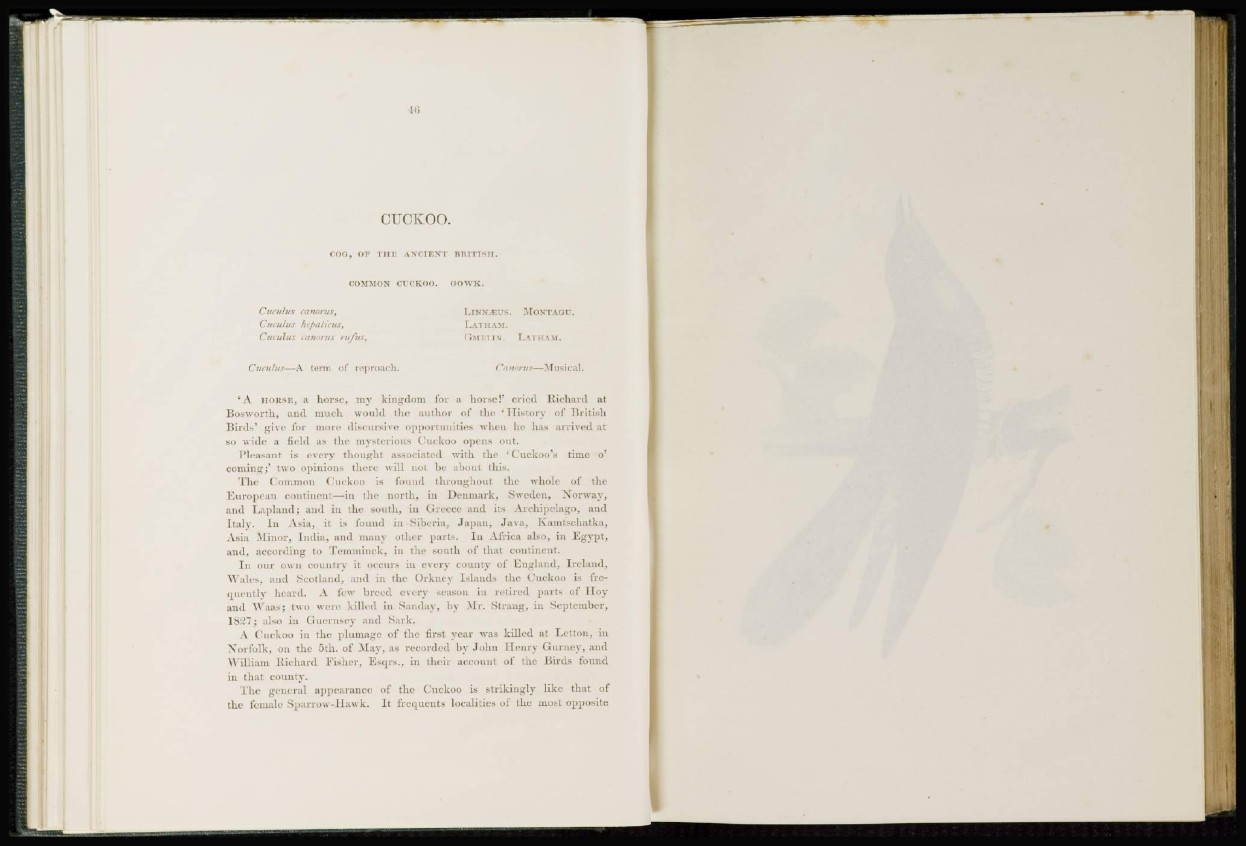
Hi
CUCKOO.
COG, OF THE ANCIENT BRITISH.
COMMON CI CKOO. G O W K .
Cuculus canorus,
Cuculus htpaticus,
Cuculus canorus ruf us t
LINNJEUS. MONTAGU.
LATHAM.
(TMELIN. LATHAM.
Cuculus—A term of reproach. Canorus—Musical.
'A HORBE, a horse, my kingdom for a horse!' cried Richard at
Bosworth, and much would the author of the ' History of British
Birds' give for more discursive opportunities when he has arrived at
so wide a field as the mysterious Cuckoo opens out.
Pleasant is every thought associated with the "Cuckoo's time o'
coming;' two opinions there w ill not he about this.
The Common Cuckoo is found throughout the whole of the
European continent—in the north, in Denmark, Sweden, Norway,
and Lapland; and in the south, in Greece and its Archipelago, and
Italy. In Asia, it is found in Siberia, Japan, Java, Kamtsehatka,
Asia Minor, India, and nian\ other parts. In Africa also, in Egypt,
and. according to Temminck, in the south of that continent.
In our own country it occurs in every county of England. Ireland,
Males, and Scotland, and in the Orkney Islands the Cuckoo is frequently
heard. A few breed every season in retired parts of I loy
and Waas; two were killed in Sanday, by Mr. Strang, in September,
18«T; also in Guernsey and Sark.
A Cuckoo in the plumage of the first year was killed at Letton, in
Norfolk, on the 5th, of May. as recorded by John Henry Gurney, and
William Richard Fisher, Esqrs., in their account of the Birds found
in that county.
The general appearauce of the Cuckoo is strikingly like that of
the female Sparrow-Hawk. It frequents localities of the most opposite